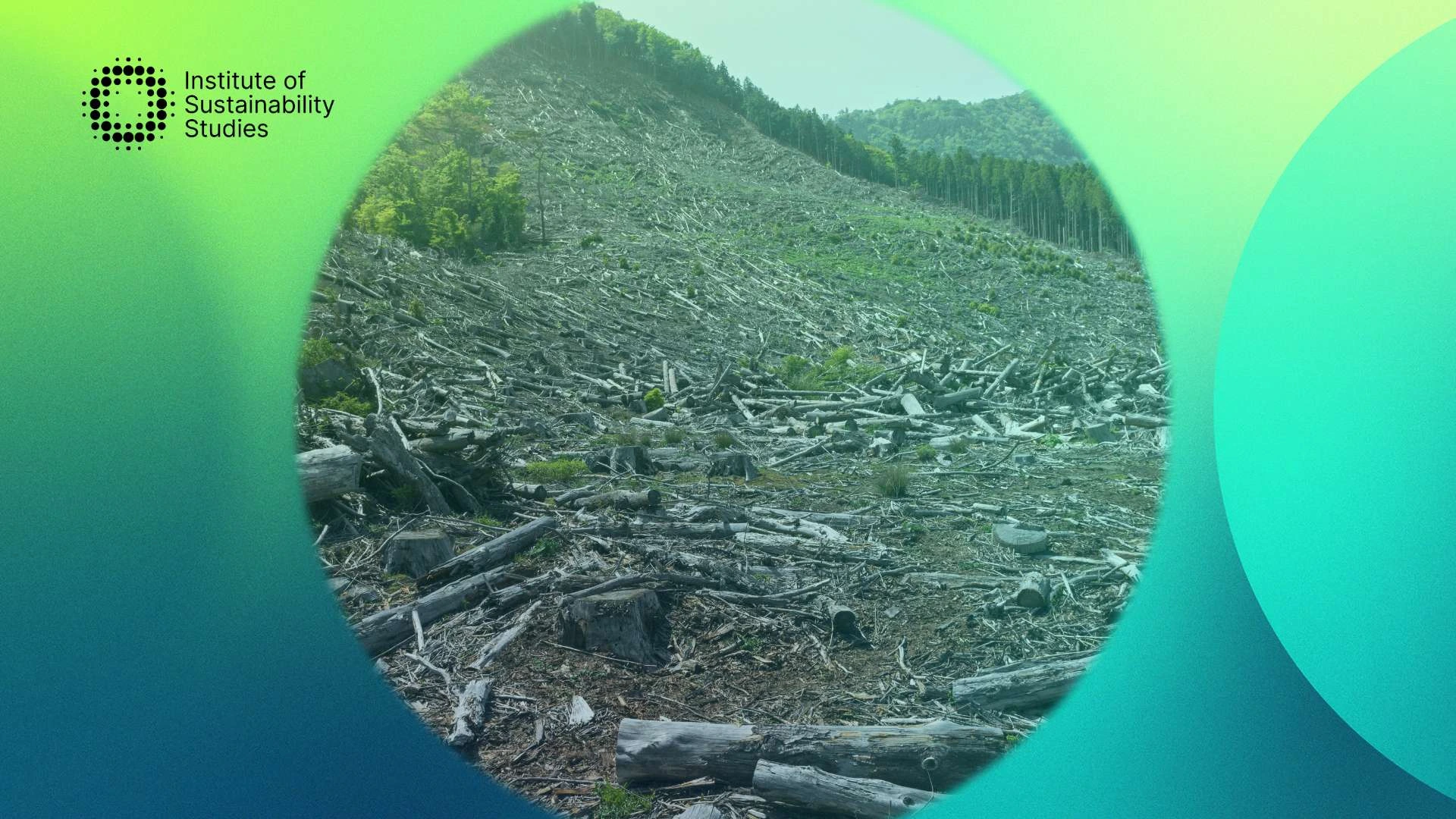Earth Overshoot Day serves as a stark reminder of humanity’s overconsumption of natural resources. Earth Overshoot Day 2024 fell on August 1st, and it was revealed that humanity burnt through the planet’s yearly resources in just 7 months. This day marks the point each year when our demand for ecological resources exceeds what the planet can regenerate, highlighting the urgent need for change.
This date is a critical indicator for businesses and governments alike, showing where corporate sustainability strategies must evolve to reduce ecological footprints and align with Earth’s limits. As global consumption trends continue to strain our planet’s capacity, we must adopt more sustainable practices across energy, food systems, urban planning, and resource management to delay this pivotal date.
What is Earth Overshoot Day?
Earth Overshoot Day is the date each year when humanity’s demand for ecological resources and services exceeds what Earth can regenerate in that year. In other words, it marks the point when we begin overusing the planet’s natural resources, leading to a depletion of ecological capital and an accumulation of waste, including carbon emissions.
The concept was developed by the Global Footprint Network, an international research organisation that calculates the date annually based on resource consumption trends and the Earth’s biocapacity. Earth Overshoot Day is a vital indicator of unsustainable practices and overconsumption, urging individuals, businesses, and governments to address resource efficiency and sustainability.
The date is determined by comparing the following and multiplying by 365.
- Humanity’s ecological footprint: This includes the resources we consume (like food, water, and energy) and waste generated (like carbon emissions).
- Earth’s biocapacity: The amount of natural resources Earth can regenerate within the same year.
What we learned from Earth Overshoot Day 2024
Earth Overshoot Day 2024 provided valuable insights into the persistent challenge of ecological overshoot. Below are some of the critical focus areas that emerged from last year’s analysis:
Energy transition
The main insight here was that fossil fuels remain a dominant contributor to global greenhouse gas emissions and ecological overshoot. Actions we can take to push back the next Earth Overshoot Day include the following:
- Accelerate the shift to renewable energy sources such as solar, wind, and hydro.
- Improve energy efficiency in industrial, residential, and transportation sectors.
- Scale up investment in clean energy infrastructure globally, especially in developing nations.
Food systems and agriculture
Last year’s analysis highlighted that agriculture accounts for a significant portion of humanity’s ecological footprint. This is driven by deforestation, water use, and methane emissions from livestock. Some of the actions we can take in this area to push back the next date include:
- Promote sustainable agricultural practices, including crop rotation, regenerative farming, and agroforestry.
- Reduce food waste along the supply chain and at the consumer level.
- Support plant-based diets and alternative protein sources to lower the resource intensity of food production.
Resource efficiency and circular economy
The analysis emphasised that current linear consumption patterns are a significant issue because they are driving the depletion of resources at an alarming rate. Actions we can take in this area to drive positive change include:
- Adopt circular economy principles to extend the life cycle of products through reuse, repair, and recycling.
- Encourage businesses to design products for durability and recyclability.
- Develop robust waste management systems to minimise landfill use and maximise resource recovery.
Urban sustainability
We learned that urban areas are hotspots for resource consumption, and this is contributing heavily to energy use, waste generation, and water demand. We can take the following actions in this area to help push back the next Earth Overshoot Day:
- Enhance urban planning to prioritise green infrastructure, energy-efficient buildings, and public transportation.
- Expand green spaces to improve biodiversity and reduce heat island effects.
- Encourage smart city technologies to optimise resource use and reduce emissions.
Technology and innovation
It’s also clear from looking at the last Overshoot Day that advanced technologies for monitoring and mitigating environmental impacts remain underutilised. With this in mind, the following should be considered:
- Invest in technologies like Carbon Capture and Storage (CCS), AI-driven resource management, and renewable energy innovations.
- Support research and development for scalable solutions in waste management and sustainable production.
How can we push back Earth Overshoot Day?
Pushing back Earth Overshoot Day requires systemic and individual changes across multiple sectors to reduce humanity’s ecological footprint and bring resource consumption in line with Earth’s regenerative capacity. Below are some strategies.
Transition to renewable energy
Replacing fossil fuels with renewable energy sources is a critical step toward delaying Earth Overshoot Day. Solar, wind, and hydroelectric power can significantly reduce our reliance on finite resources and cut greenhouse gas emissions. Enhancing energy efficiency in buildings, transportation, and industrial processes further helps lower energy demand. Investment in smart grid technologies ensures optimised energy distribution and minimises waste.
Sustainable food systems
Food systems contribute significantly to humanity’s ecological footprint, and reforming them is essential. Reducing food waste across supply chains and at the consumer level is a straightforward and impactful change. Shifting diets to include more plant-based foods and reducing resource-intensive livestock farming can alleviate pressure on ecosystems. Additionally, adopting regenerative farming techniques, such as restoring soil health and using water-efficient irrigation, ensures sustainable agricultural practices.
Promoting a circular economy
Transitioning to a circular economy is key to resource conservation. Products should be designed for durability, repairability, and recyclability to minimise waste. Recycling infrastructure must be expanded to recover valuable materials and reduce reliance on landfills. Businesses can adopt circular models, such as leasing or remanufacturing, to reduce their environmental impact while maintaining profitability.
Improving urban sustainability
Urban areas are hotspots of resource consumption, making sustainable urban planning a necessity. Energy-efficient homes and infrastructure, combined with expanded public transport systems, can significantly lower emissions. Green spaces within cities not only improve air quality but also enhance biodiversity and create healthier living environments.
Preserving and restoring natural ecosystems
Protecting and restoring natural ecosystems is vital for delaying Earth Overshoot Day. Preventing deforestation and supporting reforestation initiatives help sequester carbon and preserve biodiversity. Critical ecosystems like wetlands and mangroves must be protected for their ability to act as natural carbon sinks. Sustainable land management practices also prevent degradation and promote ecological resilience.
Supporting sustainable business practices
Businesses have a significant role to play in sustainability. Companies should measure and actively work to reduce their carbon footprints, aligning their strategies with science-based targets. Adopting frameworks like the Global Methane Pledge and fostering innovation in green technologies can drive meaningful change. By embedding sustainability into business models, organisations can contribute to systemic progress.
Final thoughts
While significant challenges remain, progress to push Earth Overshoot Day back is possible through collective action across sectors, from energy transition to sustainable urban planning. Incremental shifts can accumulate to create lasting change, ensuring a balance between consumption and planetary resources. By equipping employees with the tools to implement impactful strategies, businesses can lead the way in making this a reality. Explore our practical sustainability training for employees and empower your team to embed responsible business practices at the heart of your organisation.
Dedicated to harnessing the power of storytelling to raise awareness, demystify, and drive behavioural change, Bronagh works as the Communications & Content Manager at the Institute of Sustainability Studies. Alongside her work with ISS, Bronagh contributes articles to several news media publications on sustainability and mental health.
- Bronagh Loughlinhttps://instituteofsustainabilitystudies.com/insights/author/bronagh/
- Bronagh Loughlinhttps://instituteofsustainabilitystudies.com/insights/author/bronagh/
- Bronagh Loughlinhttps://instituteofsustainabilitystudies.com/insights/author/bronagh/
- Bronagh Loughlinhttps://instituteofsustainabilitystudies.com/insights/author/bronagh/











